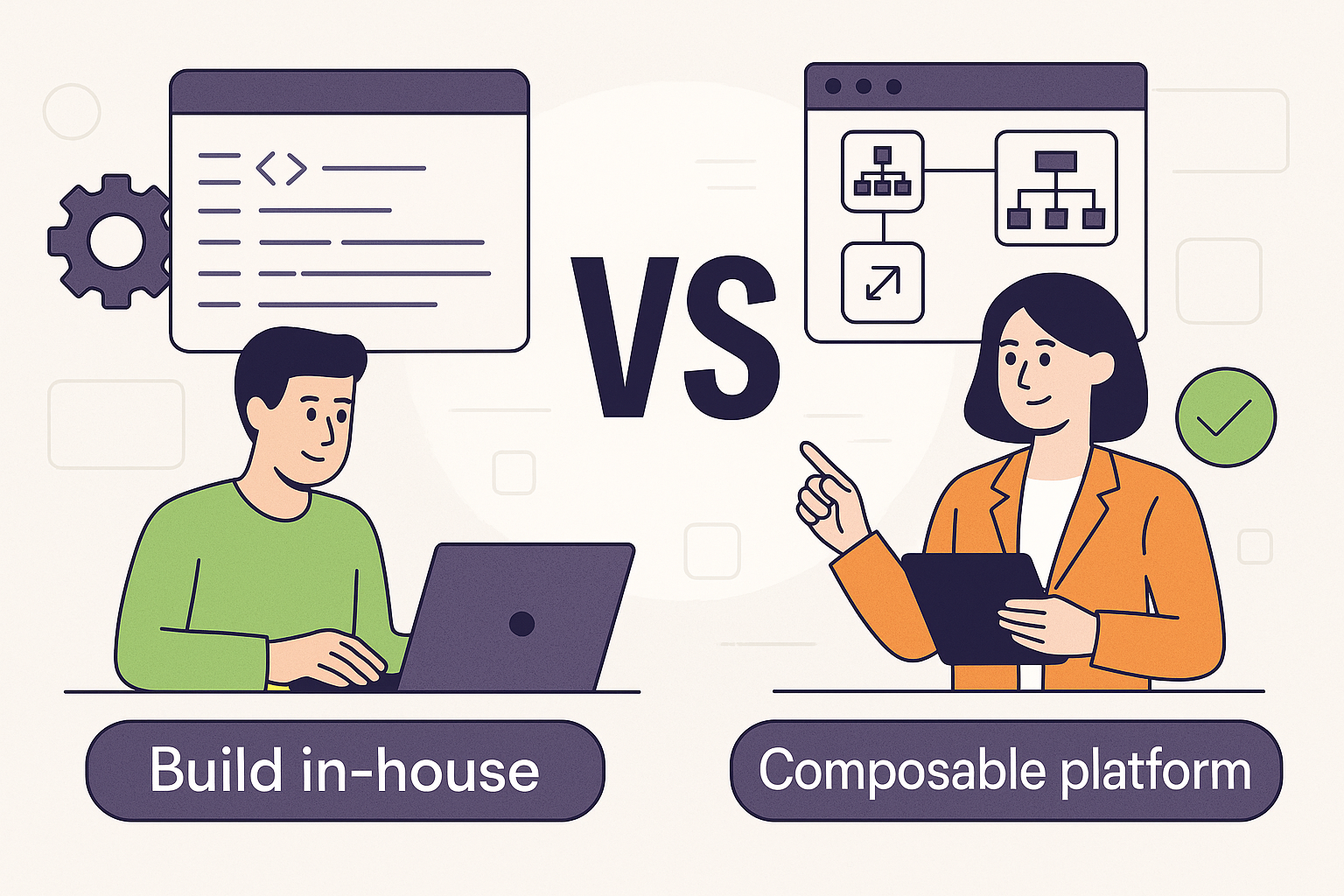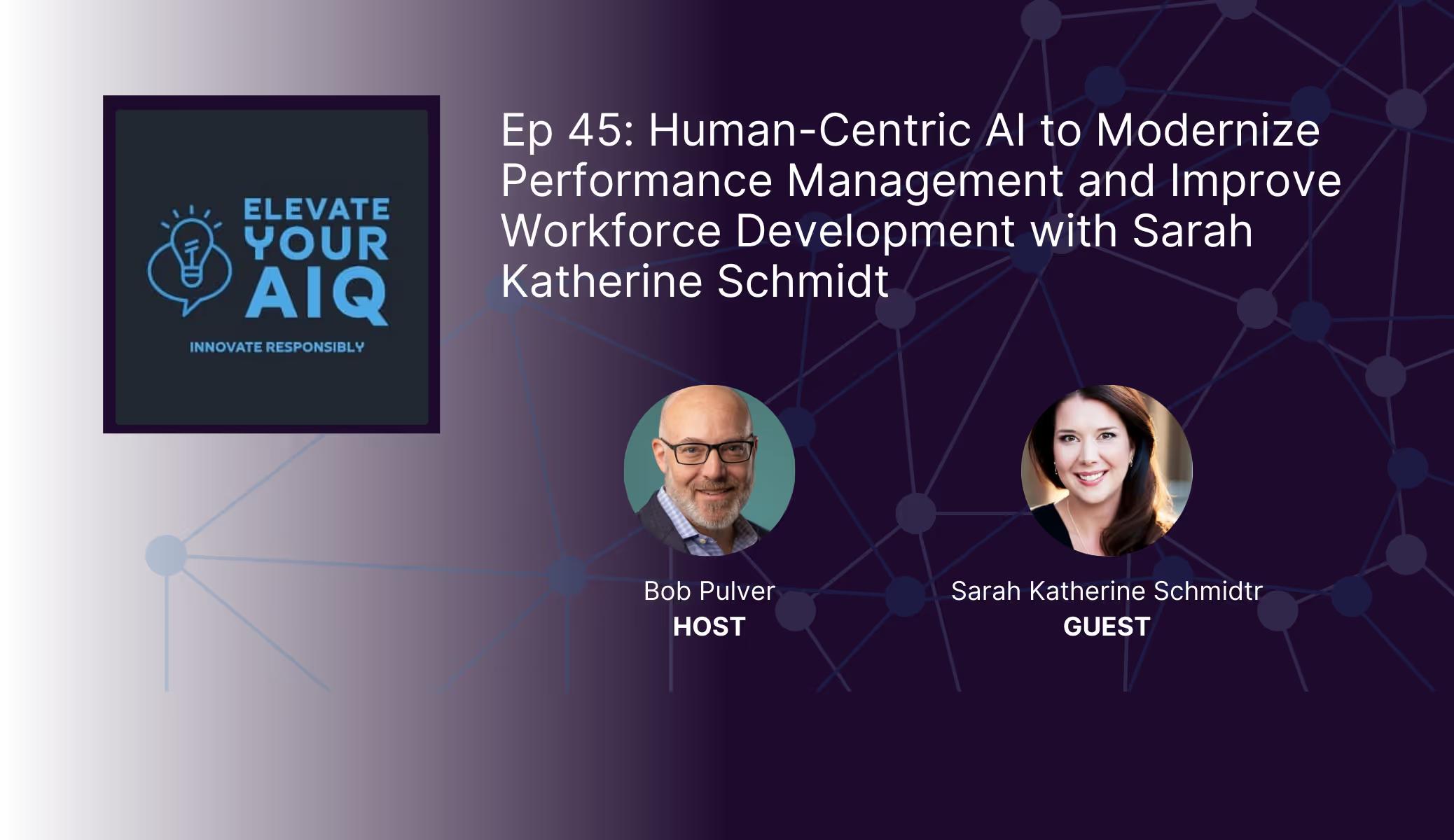In today's AI-native landscape, HR technology decisions have significant implications for organizational agility, employee experience, and resource allocation. Companies face a critical choice: invest in a solution that doesn’t fit all of the organization’s needs, build custom HR features in-house, or leverage API-first composable platforms that provide ready-to-implement solutions. This analysis explores the considerations, costs, and benefits of these approaches to help organizations make informed decisions aligned with their strategic objectives.
The Build it Yourself Development Approach
Potential Benefits
Building HR features from scratch offers compelling advantages for organizations seeking tailored solutions. Complete customization enables precise alignment with unique workflows and organizational culture, ensuring the technology truly serves your specific needs rather than forcing adaptation to standardized approaches. This customization creates a proprietary advantage as these bespoke solutions can differentiate how you manage talent compared to competitors using off-the-shelf products. Direct control over the development roadmap further enhances this advantage, allowing rapid adaptation to changing requirements without waiting for vendor updates or feature releases.
The benefits extend beyond the software itself to organizational capabilities and knowledge. System integration tends to be more seamless with existing proprietary systems, reducing data silos and workflow disruptions that often plague patchwork HR technology ecosystems. Perhaps most significantly, the development process builds valuable institutional knowledge about both HR processes and technical requirements. This enhanced expertise creates a virtuous cycle where your team becomes increasingly self-sufficient, able to identify optimization opportunities and implement solutions with growing efficiency—an advantage that transcends any individual HR feature.
Hidden Costs and Challenges
While building HR features from scratch offers customization benefits, organizations must consider the substantial hidden costs and challenges. Development expenses typically range from $150,000-$500,000 for initial implementation of basic HR features, varying based on complexity. This investment doesn't end at launch – ongoing maintenance generally requires 15-25% of initial development costs annually. The opportunity cost is equally significant, as engineering resources are diverted from core business initiatives that might deliver higher strategic value. Time to market represents another critical factor, with initial implementation often taking 6-18 months, substantially delaying potential benefits and organizational improvements.
Organizations must also consider the accumulation of technical debt as systems age and require updates, creating a growing maintenance burden. The compliance landscape adds further complexity, as companies assume full responsibility for keeping up with changing regulations across multiple jurisdictions, requiring constant vigilance and updates.
The Composable Platform Approach
Key Advantages
Composable HR platforms offer several compelling advantages over from scratch development approaches. Faster implementation stands out immediately, with typical deployments completed in just 2-8 weeks compared to the months or years required for custom solutions. Organizations also benefit from cost predictability through subscription-based pricing models that facilitate clear budget forecasting without unexpected development expenses. Additionally, the scalability of composable platforms allows companies to expand both features and user base without proportional cost increases, supporting organizational growth without additional investment.
Let’s not forget the underlying thread of implementing a composable platform is: your engineering team gets to do what they do best – build your product not HR tools. With a platform you’re building from scratch, talent requirements present an ongoing challenge, as organizations need to hire and retain specialized developers familiar with HR technologies – a skill set that combines technical expertise with domain knowledge and may be difficult to find and expensive to maintain. Engineers likely want to focus on developing their domain knowledge in other areas that better serve the business.
From a user experience perspective, users enjoy continuous improvement through regular updates and new features delivered automatically without requiring dedicated development effort. The enhanced experience plus the reduced maintenance burden represents significant value, as the platform provider handles all updates, security patches, and infrastructure management tasks that would otherwise consume internal resources.
Finally, composable platforms come with best practices built-in, providing access to industry standards and evolving HR methodologies refined across multiple organizations. Finally, robust compliance management ensures platform providers typically maintain regulatory compliance across jurisdictions, significantly reducing legal and operational risks.
Potential Limitations
While composable platforms offer numerous advantages, organizations should also consider some potential limitations when evaluating their HR technology strategy. Customization constraints may require adapting organizational processes to fit platform capabilities rather than having technology perfectly match existing workflows. Integration considerations also become important when connecting with legacy or highly customized systems, sometimes requiring additional middleware or development work. Additionally, while the burden of hosting is not on the company itself, subscription costs represent an ongoing expense that typically ranges from $8-20 per employee per month, which can add up for larger organizations.
Vendor dependency creates another challenge, as organizations must rely on the platform provider for system performance and availability, potentially introducing business continuity risks. This dependency extends to product development as well, with organizations having limited influence over feature prioritization and the development roadmap compared to in-house solutions. Despite these considerations, many organizations find that the benefits of rapid implementation, reduced maintenance burden, and continuous innovation outweigh these potential limitations, especially when the HR functions being supported follow industry-standard practices rather than highly specialized processes.
The Total Cost of Ownership Calculation
Total Cost of Ownership (TCO) is a comprehensive financial assessment that calculates the complete lifetime cost of an HR solution beyond just initial development or purchase. It encompasses direct expenses like infrastructure, licenses, and maintenance as well as indirect costs including training, integration, opportunity costs, and risk management. When evaluating TCO, organizations must consider several factors beyond immediate development costs:
- Infrastructure costs: Servers, databases, security systems, and monitoring tools
- Staffing requirements: Developers, QA specialists, project managers, and system administrators
- Training expenses: Both for technical team and end-users
- Opportunity costs: Value of alternative projects that could have been pursued
- Time-to-value: Economic impact of delayed implementation
- Risk management: Costs associated with compliance failures or security incidents
- Scalability expenses: Additional costs as user base or feature set grows
According to industry research, the 5-year TCO for HR solutions that are built from scratch typically ranges from 3-5 times the initial development investment, while composable platform solutions offer more predictable costs through subscription models that include most of these elements.
Decision Framework: When to Build from Scratch vs. When to Compose
The "build vs. compose" decision in HR technology is a new one organizations should consider strongly. The process involves weighing factors like customization needs, available resources, implementation timelines, and total cost of ownership to determine whether the control and specificity of custom development outweighs the speed, reliability, and ongoing support offered by composable platforms. Here’s a quick breakdown to help you make this important decision.
Consider building from scratch when your HR processes are truly unique and central to competitive advantage. This approach is most beneficial when you have significant technical resources with HR domain expertise available within your organization. This approach to development makes sense for features that will serve as long-term core capabilities requiring ongoing customization to maintain their strategic value. For instance, organizations operating in highly specialized industries with unique compliance requirements may find custom solutions necessary to address their specific regulatory needs. Additionally, building from scratch becomes more compelling when existing platforms lack critical integrations with your essential systems, potentially creating workflow gaps that could undermine efficiency.
A composable platform is the optimal choice when several key factors align with your organizational needs. First, when rapid deployment is essential, these platforms offer implementation timeframes measured in weeks rather than the months required for custom development. Organizations with HR processes that follow industry standard practices will find composable platforms particularly well-suited, as these solutions incorporate established best practices refined across multiple companies.
As we’ve discussed, the composable approach is especially valuable when technical resources are constrained or strategically focused on core business initiatives, allowing your development team to concentrate on truly differentiating capabilities. Companies seeking budget predictability benefit from the subscription-based pricing models that provide clear forecasting and eliminate unexpected development costs. For organizations operating across multiple jurisdictions, headless platforms typically maintain comprehensive regulatory compliance, automatically adapting to changing requirements without additional effort. Finally, these solutions excel in scenarios requiring rapid scaling of HR capabilities to support organizational growth, providing the flexibility to expand both features and user base without proportional cost increases.
The Hybrid Approach: A Pragmatic Alternative
Many organizations find success with a hybrid strategy that combines the advantages of both approaches:
- Core vs. commodity assessment: Implement composable platforms for standard HR functions while building only truly differentiating capabilities in-house
- API-first implementation: Select platforms with robust APIs that allow custom extensions without full custom development
- Phased approach: Start with platform solutions to achieve quick wins while developing custom features for specific needs over time
- Microservices architecture: Compose modular custom components that integrate with platform capabilities
Peoplelogic.dev: A Case Study in Composable HR Platforms
Peoplelogic represents the new generation of API-first composable HR platforms that offer significant advantages over traditional build approaches. These new platforms are built for the AI-native talent management world. With implementation timeframes measured in weeks rather than months, organizations can rapidly deploy sophisticated HR capabilities without extended development cycles. The platform's flexible API ecosystem provides extensive integration capabilities with existing business systems, ensuring seamless data flow across the technology stack. Additionally, configurable workflows allow teams to adapt processes to their unique organizational needs without custom coding, striking an ideal balance between standardization and customization.
Beyond implementation advantages, Peoplelogic delivers ongoing value through its data-driven insights and continuous evolution. The platform offers advanced analytics capabilities that would require significant development resources to build in-house, enabling HR teams to make more informed decisions based on comprehensive workforce data. This value proposition is further enhanced through regular feature updates that incorporate emerging HR best practices, ensuring organizations benefit from industry innovations without additional development investment. This combination of implementation speed, configuration flexibility, and continuous improvement makes the Peoplelogic composable platform offering increasingly attractive compared to resource-intensive custom development.
Conclusion: Making the Strategic Choice
The decision between building HR features from scratch or leveraging a composable platform like Peoplelogic should be guided by a thorough analysis of organizational needs, technical capabilities, and strategic priorities. While development from scratch offers maximum customization, the significantly higher costs, longer implementation timelines, and ongoing maintenance burden make it appropriate for only the most specialized use cases where competitive advantage is truly at stake.
For most organizations, API-first composable talent management platforms provide a compelling value proposition through faster time-to-value, reduced technical debt, predictable costs, and continuous improvement without additional development effort. As these platforms continue to evolve with more sophisticated customization options and integration capabilities, the advantages of the composable platform approach will likely become even more pronounced.
The most successful organizations will approach this decision strategically, focusing internal development resources on truly differentiating capabilities while leveraging platforms for standard HR functions that benefit from industry best practices and economies of scale. This balanced approach allows companies to maintain competitive advantages through custom development where it matters most, while simultaneously accelerating implementation timelines and reducing maintenance burdens for more standardized HR processes.
%20(1).svg)







